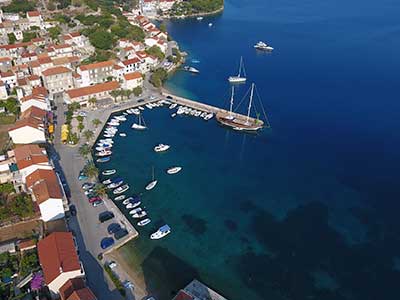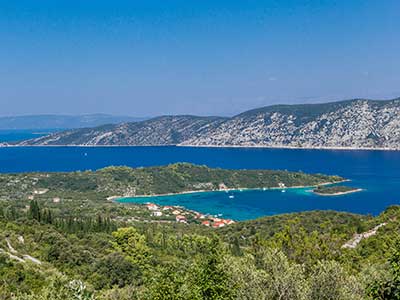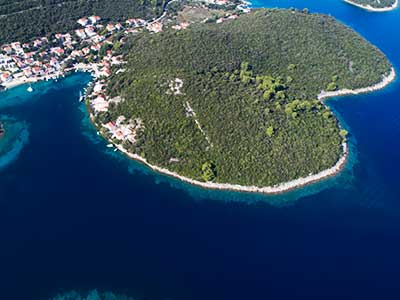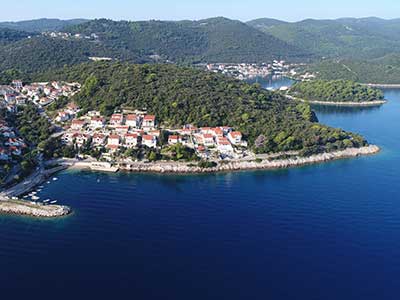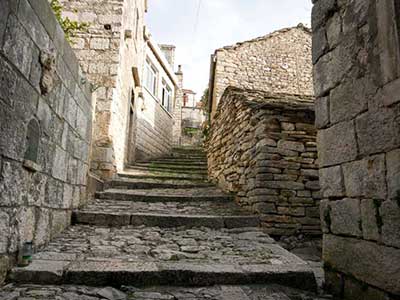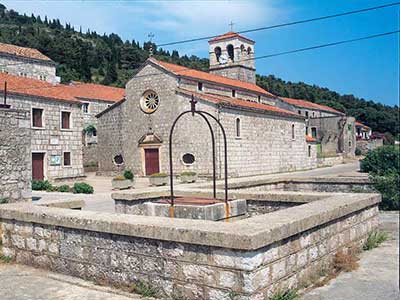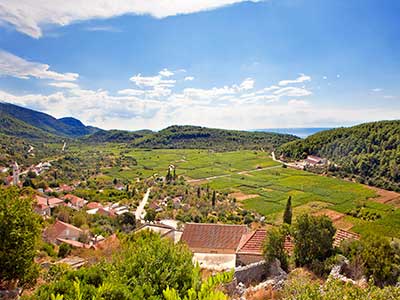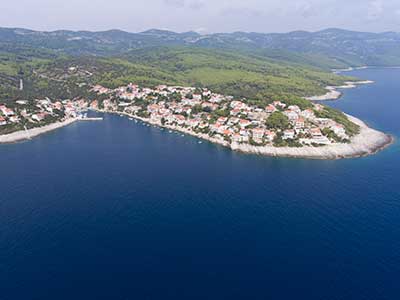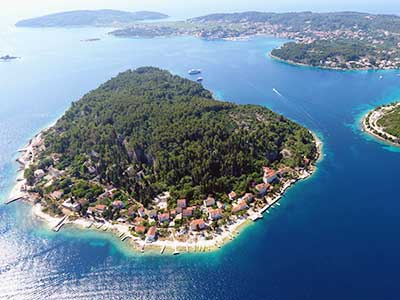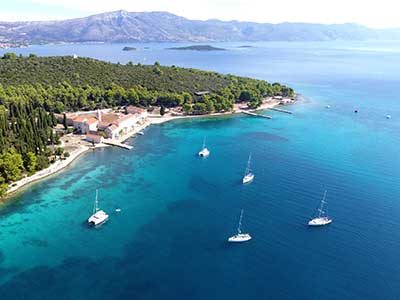Visit places and islands nearby Korčula
Korčula in Brief
is a historic fortified town on the protected east coast of the island of Korčula.
The old city is surrounded by walls, and the streets are arranged in a herringbone pattern allowing free circulation of air but protecting against strong winds.
The town's historic sites include the central Gothic and Renaissance Cathedral of St Mark, the Town Hall and the massive city fortifications.
The 15th-century Franciscan monastery with a beautiful cloister is situated on the islet of Badija, near Korčula Town.
Korčula city Tour
St. Mark's Cathedral houses 'Pieta' by Ivan Meštrović and Jesus Christ the Redeemer by Frano Kršinić.
Another work of the great Ivan Meštrović, the statue of St. Blasius (Sv. Vlaho), the patron saint of Dubrovnik together with four reliefs of the blessed Alojzije Stepinac (Kerdić), Mother Theresa, Marija Propetog Petković and Ivan Merc ( A. Lozica) are situated next to the entrance to the sacristy which is adorned with a relief of St. Michael, the remarkable work of an unknown master (14/15 c.).
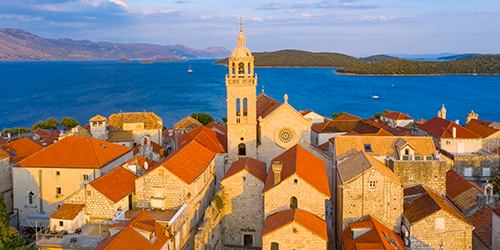
The main street in the old town divides the town neatly into the eastern and western halves, while the small side streets extending to the city walls fan out like a herring-bone. Such a perfect town plan complements the ground on which it stands, affords an ideal way of life and in particular, provides a useful defence.
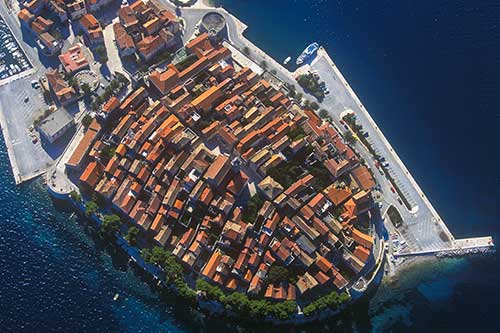
It is believed that the greatest traveller and explorer of all time, Marko Polo, was born in Korčula in 1254.
The family house of the Polos in Venice was replaced by a theatre, whereas Korčula has preserved his family house in memory of the great Marko.
Today the Depolo family remains the oldest Korčulan families.
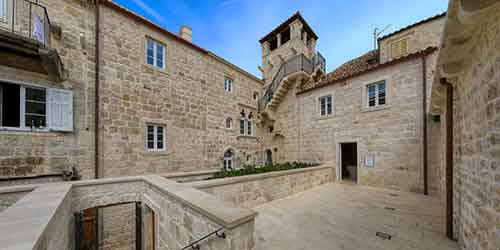
Above the entrance of the Land Gate, there are two symbols marking Korčula's history:
a bas-relief with the winged lion of St. Mark, symbolizing the reign of the Venetian Republic and a stone tablet commemorating the 1000th anniversary of the coronation of the first Croatian king, Tomislav.
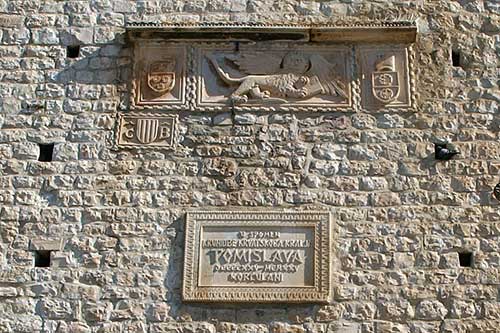
4th c. B.C – The psephisma from Lumbarda is a stone tablet wich describes the foundation of the Greek settlement. A copy is exhibited in the Korčula Town museum. This fragmented inscription describes, in old Greek, the agreement concluded between the Greek settlers from the island of Issa (Vis) with the local Illyrian leaders. It obliges settlers to absolute loyalty and includes a list of 180 names of immigrant families. This inscription, found in Lumbarda, is the oldest written document in Croatia and is housed in the Archaeological Museum in Zagreb.
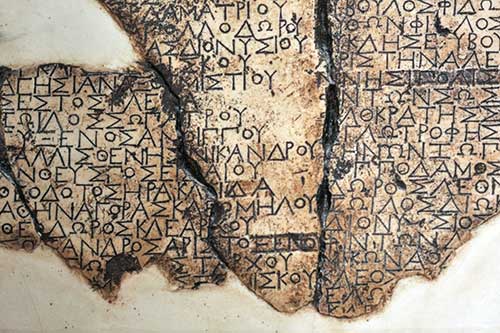
1000 - the Venetian duke Petar II Orseolo conquered Korčula. Venetian rule is established until 1420, interspersed with periods of Croatian, Hungaro-Croatian, Zahumljan and Bosnian administration.
1214 - the issuing of the Statute of the town and island of Korčula - "Statuta et leges civitatis et insulae Curzulae"; a code setting out the life and administration of the town and the island of Korčula and the legal foundation of Korčula's autonomous commune.
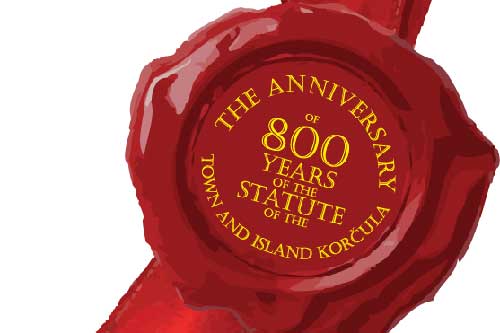
The Korcula historic centre is built on a small peninsula which narrows the passage between the island and the mainland to 1270 metres.
At the time, the reason for establishing the fortified town at this particular point was the obvious potential for controlling shipping along the eastern coast of the Adriatic.
Korcula started developing more rapidly from the 13th c. when the Statute of the town and island was proclaimed, when Marco Polo was travelling what is now known as the Silk road and when the ducal Venetian Zorzi family administered Korcula. The town's towers and ramparts were raised and made stronger and the houses and churches loftier and more elegant.
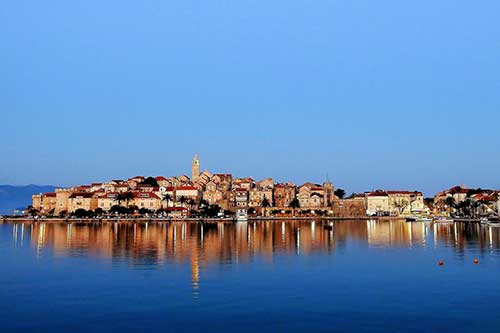
The town was at the peak of its might in the 16th c. when it was able to 'accommodate 6000 inhabitants'.
In 1871, some of the city walls and towers were pulled down when the War Ministry of Vienna informed the town authorities in 1863 that it would return the upkeep of the towers and town walls to the town, as they were no longer required for defence.
The Town Council removed the greater part of the town walls, including three of the towers.
Between the Zakrjan Tower and Rampada or Rampart (the modern name for the remnants of All Saints Tower of 1493), another two towers removed in the 19th c.: the Parilo tower and the Tower of the New Gate.
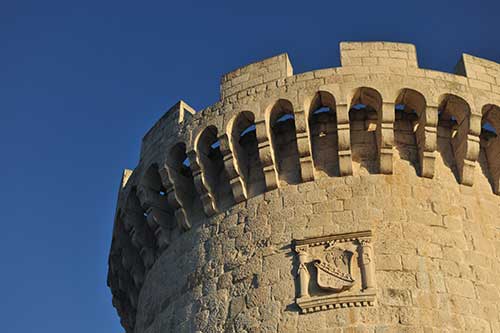
The walls and the foundations of an older tower, the Small Tower of All Saints, are visible on the same Rampada.
The street known as Charity Street (Ulica javne dobrotvornosti) leading off the main square is the only Korčula street without steps and is therefore referred to as the Street of Thinkers.
The only private street in Korčula extends to the west, opposite the church. The town prince would use it to enter the court and would descend to his private pier where the town galley was at his disposal.
'Lođa', the town loggia from 1548 was for centuries the only building outside the town walls and had various uses as a police and customs control office, to a travellers' waiting room and as the present tourist office.
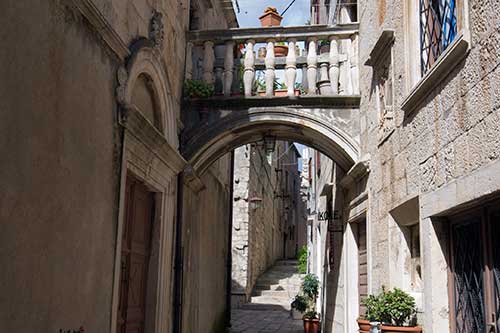
Hotel "Korčula" first opened as a cafe in 1871.
In 1912, rooms were added and it was named "Hotel de la ville".
Today it bears the name Hotel Korčula De La Ville.
It has a delightful terrace offering a splendid view up the coast.
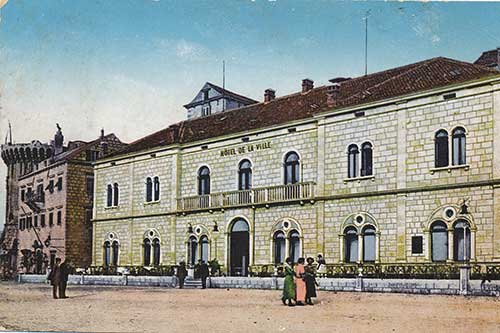
The Abbey Treasury houses one of the most significant works, the polyptich 'Our Lady With Child and Saints' from 1431, by the Dalmatian painter Blaž Jurjev Trogiranin.
Blaž Jurjev Trogiranin (? -1450) is pre-eminent in Dalmatian Gothic art and resided in Korčula from 1431 until 1435, creating paintings for Korčulan churches and teaching drawing and painting.
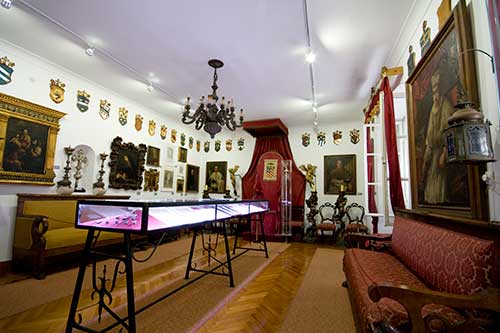
From the town centre the road along the sea leads to St. Anthony's Hill (Glavica Svetoga Antuna).
At the top of the hill via 101 steps, along an avenue of cypresses, there is the church of St. Anthony and a hermit's dwelling from 1420 with reliefs of St. Anthony of Padua and St. Anthony the Hermit.
Bishop Španić commissioned the avenue at the end of the 17th c. and is buried in the church.
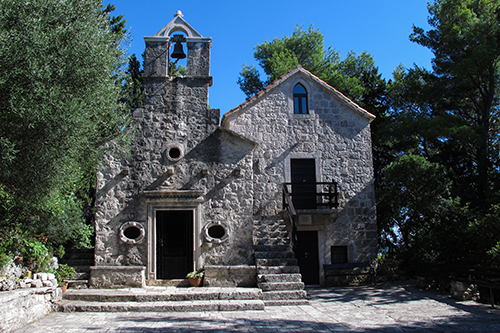
Traditional Korčula cakes are cukarini, klašuni, hrustule and prikle; and the very special rose-petal flavoured 'rozata' (cream caramel).
At Easter, traditional Easter pastries 'sirnice' are baked all over the island.
In Čara, Smokvica, Blato and Vela Luka, a traditional bread 'lumblija' is baked at the time of All Saints; and in the town of Korčula 'lojenica', a cake baked at the time of Saint Martin.

